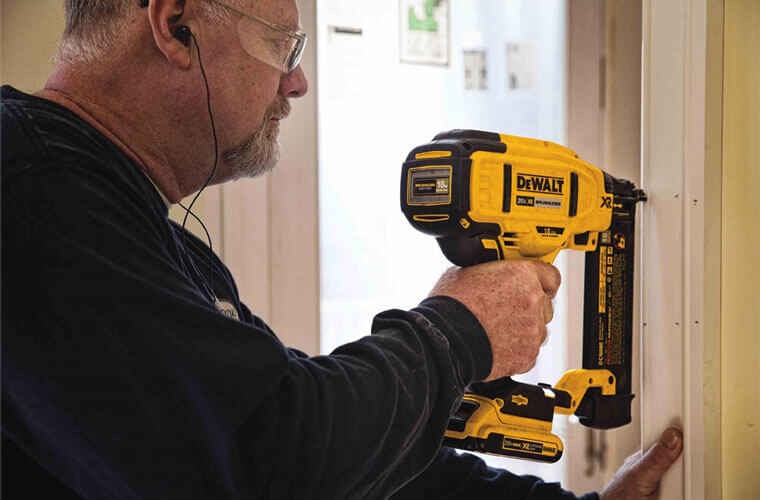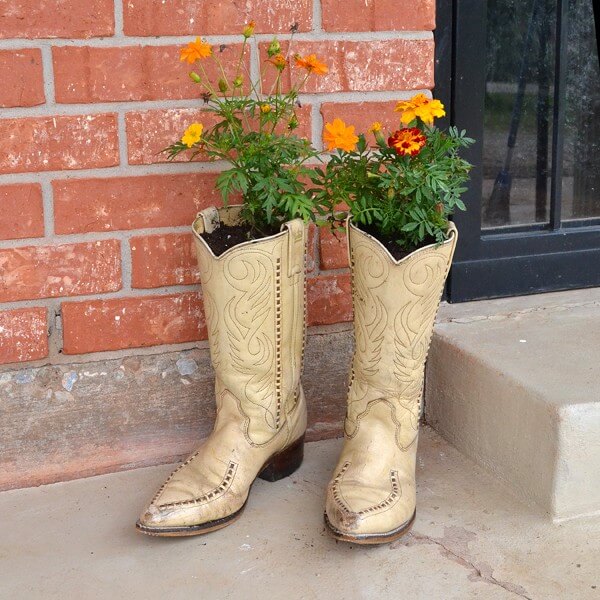A nailer is a useful tool available as part of your DIY tool or building tool, making it easier to drive nails much faster and safer than a simple hammer into almost any material. There are many types of nailers available, and many consumers are also confused as to the difference on the market between the various types of nailers.

This is true of brad nailers, which can confuse for small framing nailers. They have many uses and applications, but knowing the difference between these two types of nailers is crucial.
A pneumatic nailer is a particular nailer that is intended for small or dense wooden applications such as molding, cabinets, and various household chores and activities.
What Do You Use a Brad Nailer For?
Nailers are classified by diameter. The greater the number, the smaller it will be for the nail. Brads nailer tools are made of 18 gauge wire, unlike finish nailer that is made of 15–16 gauge wire. Check more on homenewtools
The size of the brad nailer and the speed at which the wood is sharpened make it the ideal choice to nail small, delicate pieces of wood without breaking or splitting.
For sensitive projects such as cabinet assembly, securing finishing work, and securing door and window linings, brad nailers are the best. This instrument can be used for small crafts as well.
Since brad nailers are so small, the application site typically does not need to add wood putty, which saves time. However, since brad nailers are short, it is necessary to note that they do not have the holding power that larger finish nailers have.
18-Gauge Brad Nailer Uses
Since brad nails use small 18-inch nails up to 2-inch in length, thin sections can less be cracked and a smaller hole left. They provide a clear link between wooden artifacts, reducing the need to close an inconspicuous nail hole. Brad nailer guns are perfect for connecting thin, thin pieces of wood to larger wooden items because of the small size of the nailers that you nail.
This makes them suitable for several applications for home improvement. Attaching folds, bumpers, rails, and bases, putting thorough decorations on the wardrobe, making small wooden furniture, and even basic home projects such as making frames are some of the best applications for this model.
Brad Nail Size
The brad nail size you can use depends on your nailer capacity. Gauge for 18 and 21 mm nails are available. The 18-gauge brad nail is the most common woodworking method since it provides wood companies with a firmer strip than thin needle-shaped boards can. The next fascinating thing is the length of the lock while dealing with an 18-gauge system for most of your tasks.
Brad Nailer Styles
The majority of brad nailers are pneumatic (meaning they need an air compressor hose to power the hammer). Some manufacturers are seeing the advantages of a cordless nailer in a power tool to drive a nail into a wood material (which requires a combination of a rechargeable battery and a compressed air tank).
Before, most nailers were cut straight and the container containing the nail clips is square (perpendicular) to the drive cylinder. Some manufacturers are selling angular nails, which in tight spaces can be easier to push. Make sure that you have a source of straight nail polish, regardless of the style chosen.
Safety
When comparing it to finishing or framing nailers Brad nailers are commonly considered, a reasonably stable instrument since the nails are much smaller. That does not mean that they can’t cause harm. Taking the same safety precautions when using a nailer as when working with any power tool, especially wearing goggles, keeping all excess clothing away from the work surface, and wearing earplugs or any other protective equipment, which means if they are in a high compressor. A lightweight nailer doesn’t use as much compressed air as more efficient models, so it won’t make as much noise and a relatively small compressor is sufficient to drive the nailer.
Usage Tips
When you need to connect a small or thin plate or liner to the device, a nailer is sometimes used. Using a nailer to pull (along with a harder nail) will usually separate the board, but if you push the nail too close to the end or edge of the board, this may also happen. To prevent the end from cracking, a safer method is to drive the nail deeper into the board. Every type of wood has different splitting properties, but for each type of wood (and wood thickness) you pick, a little practice will give you an idea of how far without splitting you can work with the final layers of the grain.
Often, since the nails are so thin, you can find nails that don’t fit into the layers fully. With nailers, this can be extremely troublesome since a hammer and a set of nailers make it much harder than a normal nailer to strike a nail at the end. Soon you will find that under the head of the hammer the nails bend very quickly. Relative to the knots in the wood, the nailers are often slightly twisted, which can blast the nail out precisely balanced on the side of the cladding.
It’s probably better to remove it, instead of attempting to cut or punch a protruding or blown nail.
Between Airpower or Electric Powered?
Pneumatic (air) and cordless (battery) are two types of an available brad nailer. The pneumatic system uses a powerful air compressor with a hose connected to the nailer. To allow it to penetrate the target material, changes in air pressure exert an extreme force on the nailer. A 1.5 amp battery that transforms electrical energy into kinetic energy is used by electric nailers, this enables the nail to be pulled with substantial force.
Usually, cordless nailers are more costly than pneumatic nailers, but you need to purchase an air compressor that they can add and pneumatic nailer accessories. cordless nailers are cool because they are cordless, so when you work, you don’t have to think about dragging the enormous cord around the house.
Air nailers are lighter because there is no battery inside, but it is important to take into consideration the weight of the tubes attached to them. There is a fear among some people regarding compressor transport.
Pneumatic nailers are less helpful because they are activated so fast. When you press on the electric nails, they begin to grow fast. Aspects of high-efficiency heating have not yet been found.
Conclusion
We hope you find this brad nailer usage review helpful and we believe this will help you decide if you can use it for your company.
If you decide that nails could be a superb choice for you, you’d like to go a little further into the various designs and choices. Check out for the brad nailer styles that suit your needs the best.






